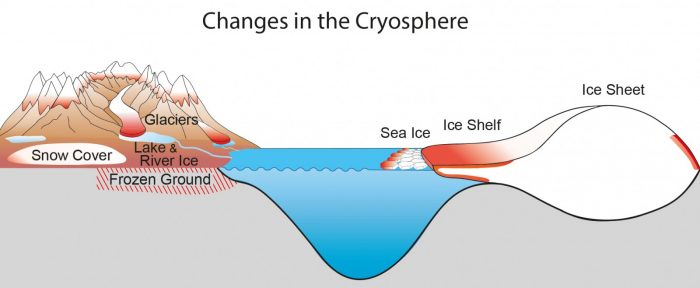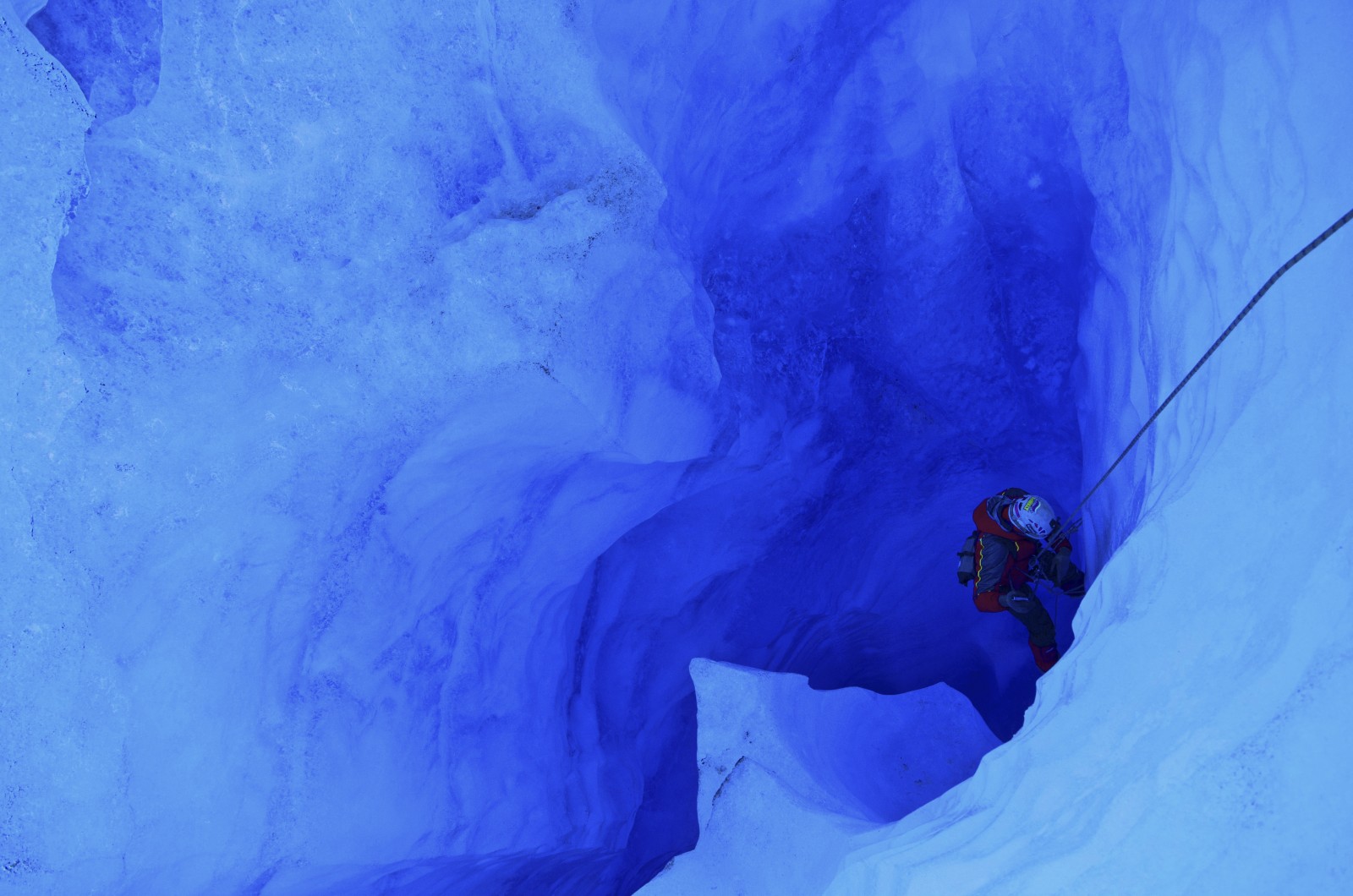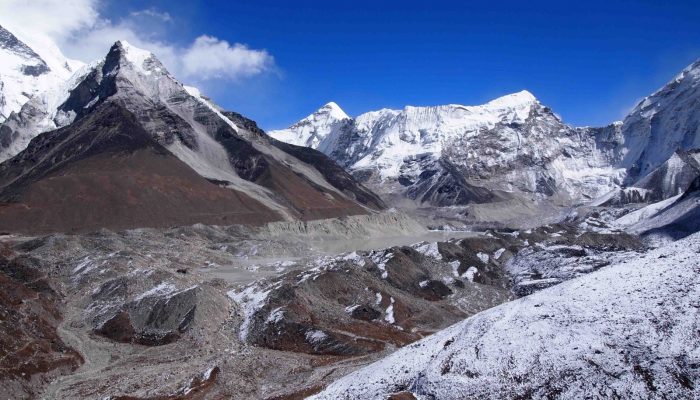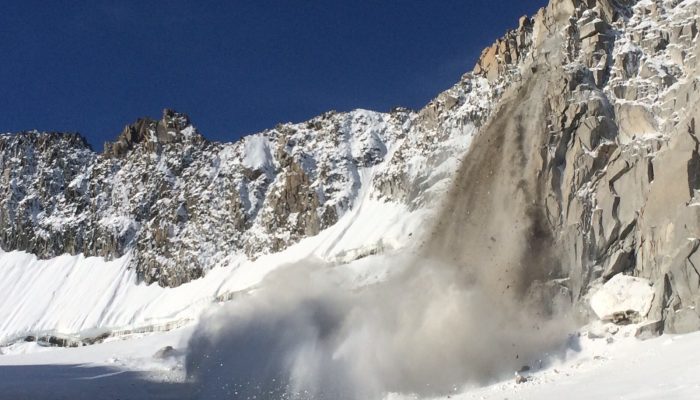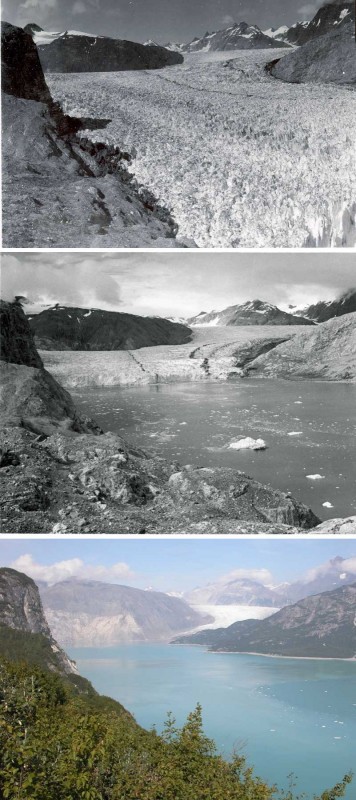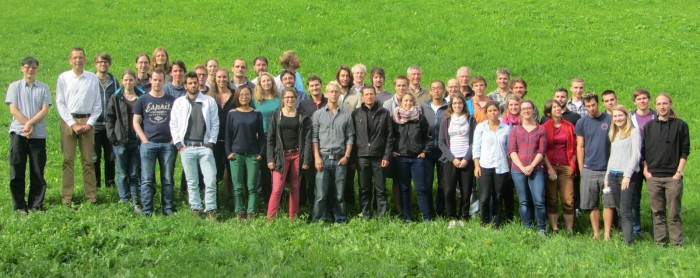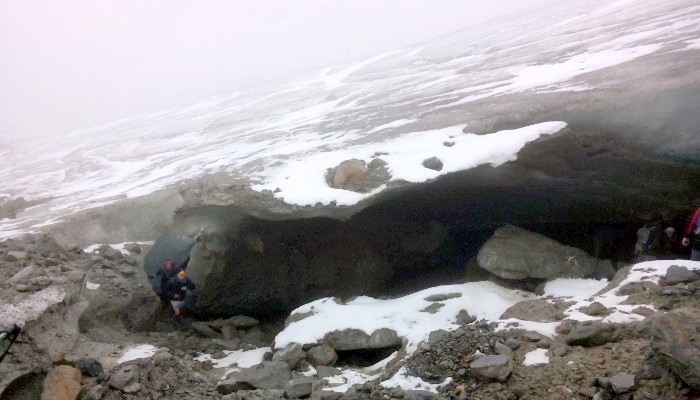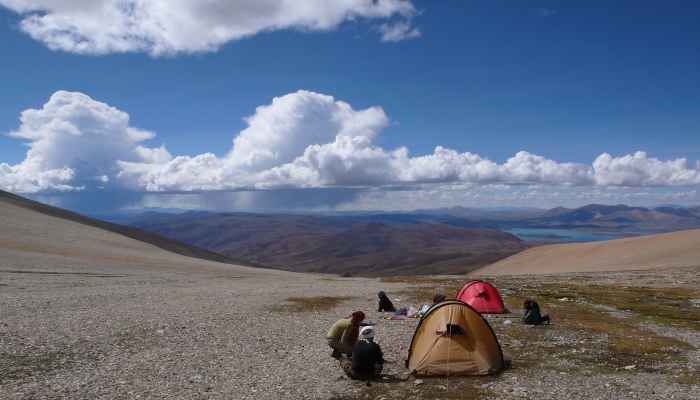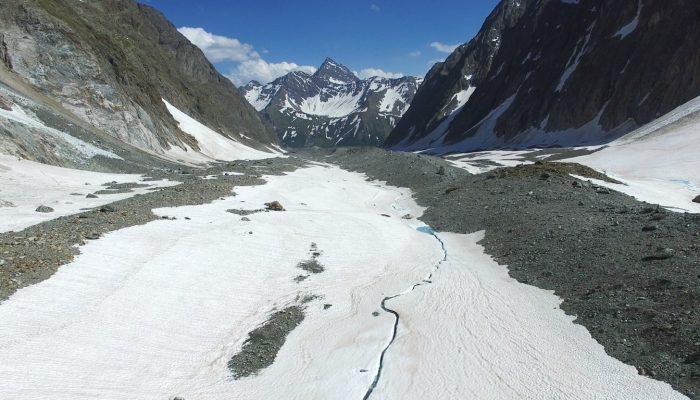
Figure 1: Down-glacier view of debris-covered Miage Glacier, Italy, taken from a low-altitude lightweight UAV in June 2016 (Credit: M. Westoby). As the summer progresses, the melting of winter snow cover prompts the development of a surface drainage network, characterised as a network of streams and ponds, which are concentrated in intermoraine troughs and drain into open crevasses or moulins. Snowmelt in this area will eventually reveal a glacier surface covered by a continuous mantle of supraglacial debris, comprised predominantly of mica-schist
What are debris-covered glaciers? Many alpine glaciers are covered with a layer of surface debris (rock and sediment), which is sourced primarily from glacier headwalls and valley flanks. So-called ‘debris-covered glaciers’ are found in most glacierized regions, with concentrations in the European Alps, the Caucasus, Hindu-Kush-Himalaya, Karakoram and Tien Shan, the Andes, and Alaska and the weste ...[Read More]
